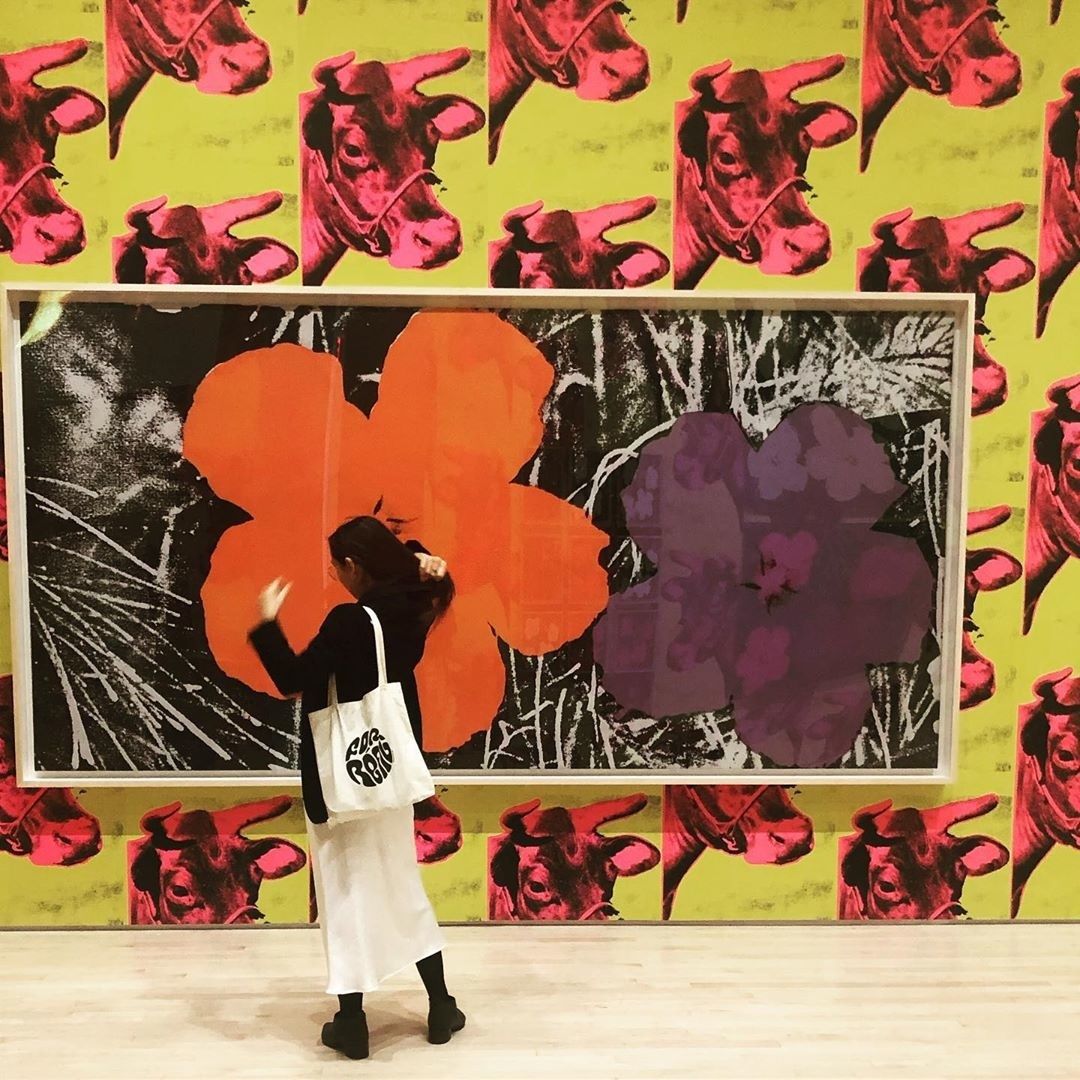Would you believe that Andy Warhol—the man, myth, and legend of American pop art, creator of such iconic pieces as the Marilyn Monroe series or the Campbell's Soup cans—only wanted to "get better at drawing"?
Or at least that's what he told Whitney Museum curator Donna De Salvo when she asked him one day how it felt to be at the center of postmodernism.
San Francisco Museum of Modern Art; fractional purchase and bequest of Phyllis C. Wattis. © The Andy Warhol Foundation for the Visual Arts, Inc. / Artists Rights Society (ARS), New York.
Andy Warhol, Liz #6 [Early Colored Liz], 1963.
▲
The Doris and Donald Fisher Collection at the San Francisco Museum of Modern Art. © The Andy Warhol Foundation for the Visual Arts, Inc. / Artists Rights Society (ARS) New York.
Andy Warhol, Triple Elvis[Ferus Type], 1963.
▲
Whitney Museum of American Art, New York; jointly owned by the Whitney Museum of American Art and The Metropolitan Museum of Art; gift of Ethel Redner Scull. ©The Andy Warhol Foundation for the Visual Arts, Inc. / Artists Rights Society (ARS) New York
Andy Warhol, Ethel Scull 36 Times, 1963
▲
The Art Institute of Chicago; gift of Edlis/ Neeson Collection. © The Andy Warhol Foundation for the Visual Arts, Inc. / Artists Rights Society (ARS) New York.
Andy Warhol, Big Electric Chair, 1967–68.
▲
© 2018 Jean-Michel Basquiat Estate. Licensed by Artestar, New York. © The Andy Warhol Foundation for the Visual Arts, Inc. / Artists Rights Society (ARS), New York.
Jean-Michel Basquiat and Andy Warhol, Paramount, 1984–85.
▲
Norton Simon Museum, Pasadena, CA; gift of the artist. © The Andy Warhol Foundation for the Visual Arts, Inc. / Artists Rights Society (ARS) New York.
Andy Warhol, Brillo Boxes, 1969 (version of 1964 original).
▲
The West Coast presentation of Andy Warhol: From A to B and Back Againopened at the San Francisco Museum of Art on Sunday May 19th. Originating at the Whitney, the exhibit features more than 300 original works from the icon's electrifying oeuvre, including pieces from SFMOMA's permanent collection, such as Triple Elvis, a silkscreen ink-on-linen from 1963.
Each piece is a commentary on the social issues of Warhol's time, many of which are proving to be even more relevant today. For example, the female self (he exalted and worshipped women in his portraits, making them look a little better than they did IRL—a prototype of Instagram filters, if you will); religion (his Camouflage Last Supper from 1986 makes a statement about the conflict between doctrine and geopolitics); and death (some say his "Electric Chair" series, depicting an empty chair and execution room, is a "deadpan" metaphor for death, representing absence and silence). Warhol died in 1987 at the age of 53 from a complications after surgery.
// Andy Warhol: From A to B and Back Again, through Sept. 2, 2019; SFMOMA, 151 Third St. (SoMa), sfmoma.org.
From Your Site Articles
Related Articles Around the Web
Related Articles
